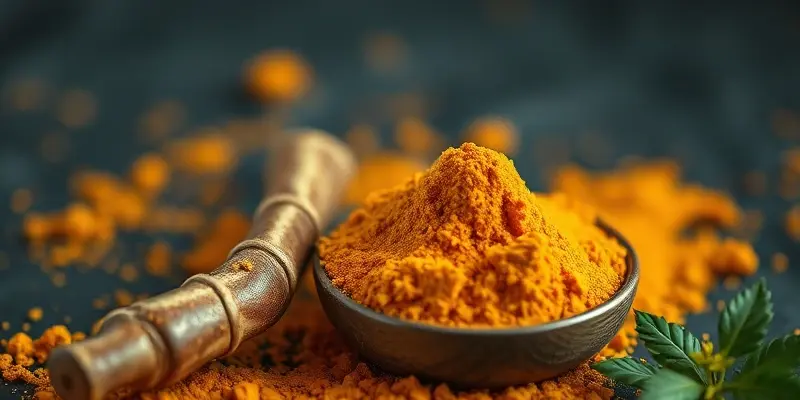Recovery is the cornerstone of every fitness journey, whether you’re just starting out or training at a professional level. If you’ve ever felt that familiar post-workout soreness or battled nagging inflammation, you know how essential fast, safe recovery is for staying motivated and making progress. But what if a simple kitchen spice—turmeric—could help you bounce back quicker? Let’s explore how science supports this ancient remedy for modern athletic recovery, and how you can safely add it to your routine.
Understanding Muscle Recovery: Why Do We Get Sore?
Before we tackle solutions, let’s look at the problem. Every time you challenge your muscles, tiny tears occur. This triggers inflammation—a natural signal for your body to start repairs. But excessive inflammation and oxidative stress (think: chemical “rust” from heavy use) can slow healing and keep you on the sidelines.
Common sports-related injuries include:
- Muscle strains and micro-tears (from weightlifting, running, or high-intensity classes)
- Joint inflammation (like swollen knees or ankles after a game)
- Delayed onset muscle soreness (DOMS), which can sap your motivation to train again soon
So, how can you recover smarter and return to your routine with energy and confidence?
Turmeric and Curcumin: The Science Behind the Spice
Turmeric, a golden-yellow spice often found in curry, owes its therapeutic power to curcumin—its main active ingredient. Here’s how curcumin helps your muscles recover:
- Reduces Inflammation: Scientific studies show curcumin lowers C-reactive protein (CRP), a major marker of systemic inflammation, and inhibits enzymes like COX-2 and mediators such as TNF-α and IL-6. This means less swelling and pain after tough workouts.
- Eases Muscle Soreness: Elite athletes supplementing with curcumin reported less muscle soreness and could resume training sooner. For regular gym-goers, this translates to more consistent, enjoyable workouts.
- Antioxidant Defense: Intense training generates free radicals, which damage cells and delay recovery. Turmeric’s antioxidants neutralize these threats, supporting healthier tissue repair and lowering your risk of overuse injuries. For more on antioxidants and their role, see antioxidants in sports nutrition.
A practical example: A 2021 clinical trial found that footballers taking a curcumin drink (about 1,400 mg twice daily) recovered faster from matches, reporting less soreness and inflammation than teammates who didn’t supplement.
How to Use Turmeric for Recovery Safely
Turmeric is more than a kitchen staple—it’s a valuable tool for healing. Here’s how to use it wisely:
- Suggested Supplement Dosage: Research often uses 1,400 mg of curcumin (roughly 35 grams of raw turmeric root) twice daily, usually in absorption-boosting drink or capsule form.
- Incorporate Synergistic Foods: Combine turmeric with black pepper and healthy fats (like olive oil) to help your body absorb more curcumin.
- Stay Hydrated and Fuel Up: Pair turmeric with protein-rich foods, leafy greens, and omega-3s to optimize tissue healing.
- Safety First: Turmeric is safe for most people, but high doses can sometimes cause mild stomach upset or interact with certain medications. Check with a healthcare provider if you have questions.
Beginner-Friendly Recovery Plan: How to Add Turmeric to Your Routine
Curious how turmeric fits into a real-life plan? Here’s a simple approach:
- Morning: Add turmeric and black pepper to a smoothie with yogurt, berries, and spinach.
- Post-Workout: Take a curcumin supplement, or stir turmeric powder into a glass of plant milk.
- Meals: Use turmeric in soups, rice bowls, or roasted veggies.
- Combine Tools: After tough sessions, use foam rolling or massage along with your turmeric routine to boost recovery synergy.
Example: After a 5K run, you might follow with a turmeric-rich smoothie, a protein-packed lunch, and 10 minutes of gentle stretching.
Realistic Outcomes and Motivation: What to Expect
Consistent use of turmeric doesn’t mean you’ll never feel sore again—but you will likely notice:
- Reduced downtime between workouts
- Fewer nagging aches from overuse
- Stronger motivation to return to training
Think of turmeric as your “smart teammate” in the gym: always supporting you quietly in the background. While you still need rest, good nutrition, and self-care, turmeric helps make each recovery cycle a little smoother.
Conclusion
Turmeric—once an ancient healing herb—is now proven by modern sports science as a powerful ally for active people. By lowering inflammation, easing soreness, and protecting your muscles, it can keep you training hard and recovering smarter. Are you using turmeric in your recovery plan? Share your experiences, tips, or questions in the comments below. Let’s keep each other strong, healthy, and motivated—one workout (and golden smoothie) at a time!

